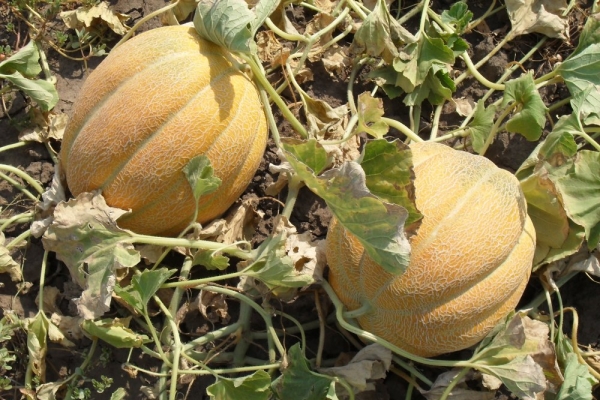There are a lot of different melon varieties. Grade Ethiopka - one of the most popular. It is designed by Russian breeders. Its differences from other varieties in high germination of germs and large size of fruits. The fruits of Melon Ethiopka are easy to transport and are remembered for their sweet taste.
Table of contents
Description and characteristics of the variety Ethiopka
Melon Ethiopka perfectly tolerates heat and is not subject to the formation of sunburn on the crust.
Shrub variety looks compact, without long lashes.From one bush it will turn out to collect 5-6 fruits.
According to the description the fruits of Ethiopka are large, round, dark yellow in color and separated by stripes on the peel. Because of this, they look like a pumpkin. To the touch fruits are rough, covered with a fine mesh pattern.
Its flesh is white and juicy, exudes a pleasant melon flavor. On the taste - honey.
Specifications:
- medium early variety;
- fruits ripen after 80 days;
- average fetal weight - 4 kg;
- the shelf life of the fruit - a month;
- thick crust allows you to transport the fruit, without fear of damaging them.
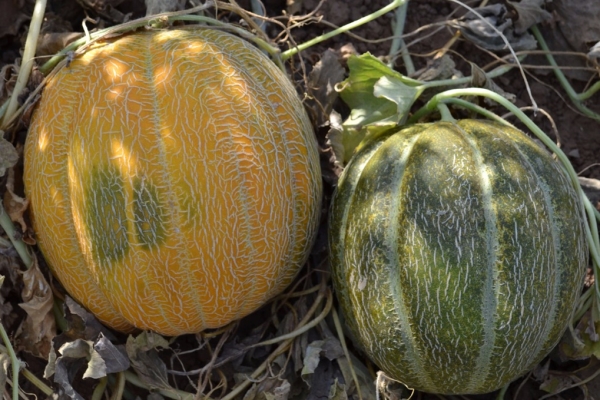
Preparing for planting
Melon Ethiopka - thermophilic plant. In the southern regions of Russia, seeds can be sown directly into the ground and expect shoots.
In the middle and northern latitudes of the country, it is preferable to use the seedling method of planting Ethiopia.
This will allow the melon to ripen and avoid unexpected frosts, because a low temperature is detrimental to the melon. And besides, the seedling method will allow to harvest melon earlier in 2-3 weeks.
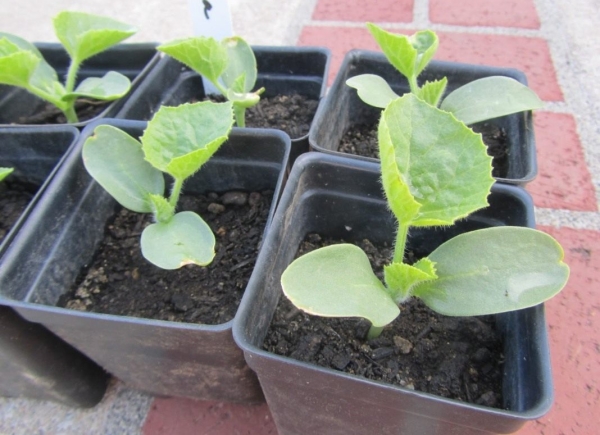
Before planting the seeds are prepared. They are soaked for a day in warm water or in a special composition for pre-treatment of seeds. This will saturate the seeds with micronutrients and improve germination.
At the preparation stage, it is easy to identify low-quality seeds: those that have surfaced in water are thrown away, those that have fallen to the bottom will give a good harvest.
Seeds are planted in special containers for seedlings, peat pots or homemade dishes. To sprouts are not intertwined with roots they are planted in individual containers or seated from each other.
You can take the garden soil, but it needs to be prepared:
- Reduce soil acidity with lime, sand, or eggshell.
- Add peat and compost to enrich the soil.
- Disinfect the soil with a weak solution of potassium permanganate.
In tanks where the earth will fall asleep, holes should be made to drain excess water. Drainage is poured at the bottom and a layer of soil is laid on top.Seeds are immersed to a depth of 4-5 cm and covered with a film.
When the first shoots appear, the film is removed. If the seeds were planted in a common container, the frail shoots are removed. The rest are fertilized with mineral fertilizers and placed in a sunny place.
If there is no opportunity to give seedlings enough light in a living room, then worth buying lamps for plants.
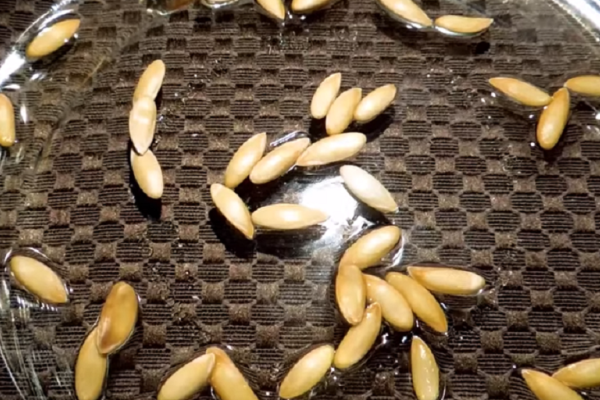
Planting and watering
Planting should take place in mid-May.. It is prepared by reducing watering and exposing the street for a couple of hours. So sprouts adapt to the future environment.
Sprouts are planted in the ground at a distance of half a meter from each other. The bed can be preheated by burying humus mixed with the ground to a depth of 40-50 cm. Above it, make holes for future sprouts and pour them abundantly with water.
When water is absorbed into the soil, seedlings can be planted. Melon sprouts buried in the ground at the level of the lower leaflets.
Water temperature for watering Ethiopia should not be lower than the ambient temperature. Care must be taken to ensure that the soil around the stem does not dry out, but it is also dangerous to flood the plants.
Half a month before harvesting, watering should stop.so that the fruits get the right amount of sugars, and the flesh does not become watery.
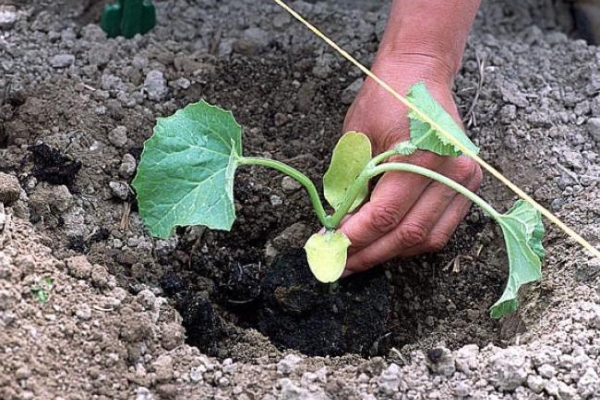
Feeding melons
Melon Ethiopka responds well to fertilizers containing potassium. In addition, many gardeners use herbal infusion for feeding Ethiopka and sprinkle the earth around the plant with wood ash.
It both nourishes the soil and helps in the fight against pests.
Diseases in cultivation
Ethiopka is susceptible to fungal diseases:
- Blackleg.
- Olive spotting.
- Mealy dew.
With olive spot oily gray spots appear on plants. Decontamination of the soil and cleaning of plant residues and diseased plants from the garden will help to avoid fungi.
When the first signs of the fungus appear, it is recommended to spray the plants with Bordeaux mixture or cartocid.

Blackleg most often affects the immature shoots of seedlings and destroy them. The roots of affected plants rot, the reasons for this lie in:
- the presence of fungus spores in the ground;
- excess humidity in the room;
- excessive watering;
- temperature drops.
To avoid this, it is necessary to observe the regime of planting and ensure that the shoots receive enough light.
The appearance on the sheets of white plaque is a sign of powdery mildew. Under the patina, ulcers form, spores of the fungus draw nutrients from the diseased plant.
Powdery mildew appears due to excess nitrogen in the soil. and in violation of the irrigation regime. Fight against powdery mildew with fungicidal agents:
- Vitaros;
- Topaz;
- Fundazol.

Growing melon Ethiopka does not require specific conditions. If you follow simple rules, you can easily get a large (on average 100 centners per hectare) yield.
Ethiopian melon is popular in Russia, the countries of Central and Asia Minor. Breeders are constantly improving this variety. In the future, new varieties of melons will appear on the basis of the Ethiopka variety.
